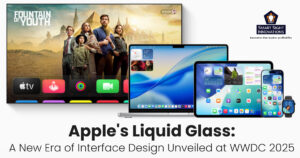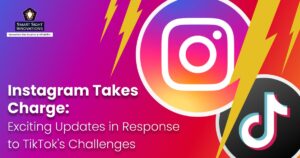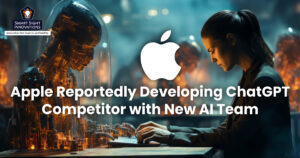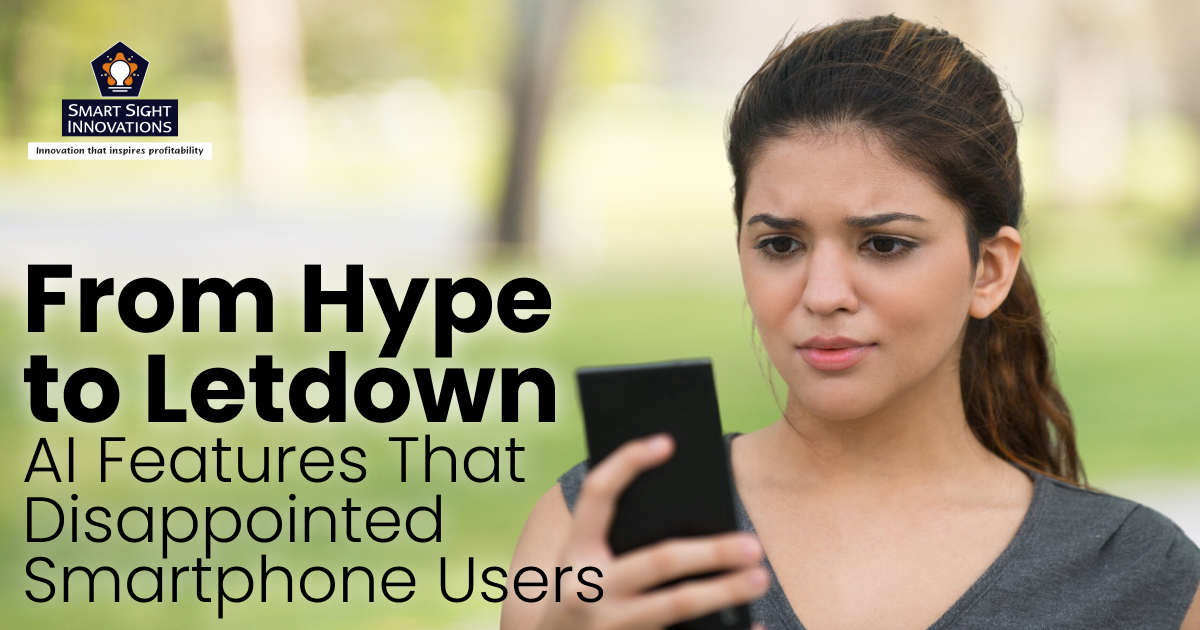
In recent years, smartphone manufacturers have heavily invested in integrating artificial intelligence (AI) features to enhance user experience and differentiate their products. However, many of these AI-powered tools have fallen short of consumer expectations. Despite impressive marketing campaigns, users often find these features to be gimmicky, inconsistent, or lacking clear practical benefits.
From AI image generators to smart assistants and search tools, several innovations have failed to deliver meaningful improvements in daily smartphone use. This gap between promise and performance highlights the challenges brands face in creating AI features that truly resonate with and add value for users. Below are some smartphone AI features that may have missed the mark.
1. Writing Tools on iPhone
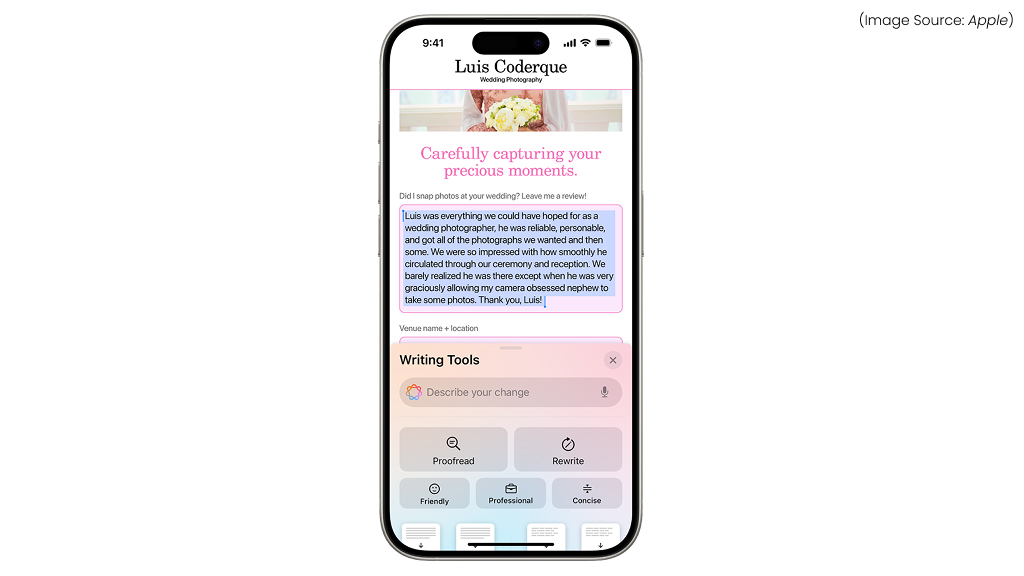
(Image Source: Apple)
Apple’s AI-powered Writing Tools, introduced as part of Apple Intelligence in iOS 18.1, have garnered significant criticism due to several limitations and issues that hinder their effectiveness and user experience. Some of it are:
-
Inaccurate and Awkward Rewrites
Users report that Writing Tools often miss the context or intent of the original message, producing awkward or even nonsensical rewrites. For example, attempts to rewrite messages containing slang or sensitive content have resulted in embarrassing and sometimes incomprehensible outputs.
-
Loss of Control and Transparency
Writing Tools automatically replace original text without showing the user what was changed, leading to confusion and a loss of authorship. This lack of transparency can result in users unknowingly sending messages that no longer reflect their intent.
-
Unnatural Tone
The AI-generated text is frequently described as robotic, lacking the playfulness or nuance that users expect from modern generative AI. This makes it unsuitable for tasks like writing cover letters or personal messages, where a natural tone is essential
-
Performance Issues and Limited Compatibility
Some users have reported that this feature slows down their devices or are incompatible with certain apps, such as WhatsApp. These performance issues can diminish the overall user experience and limit the tool’s utility.
2. Genmoji
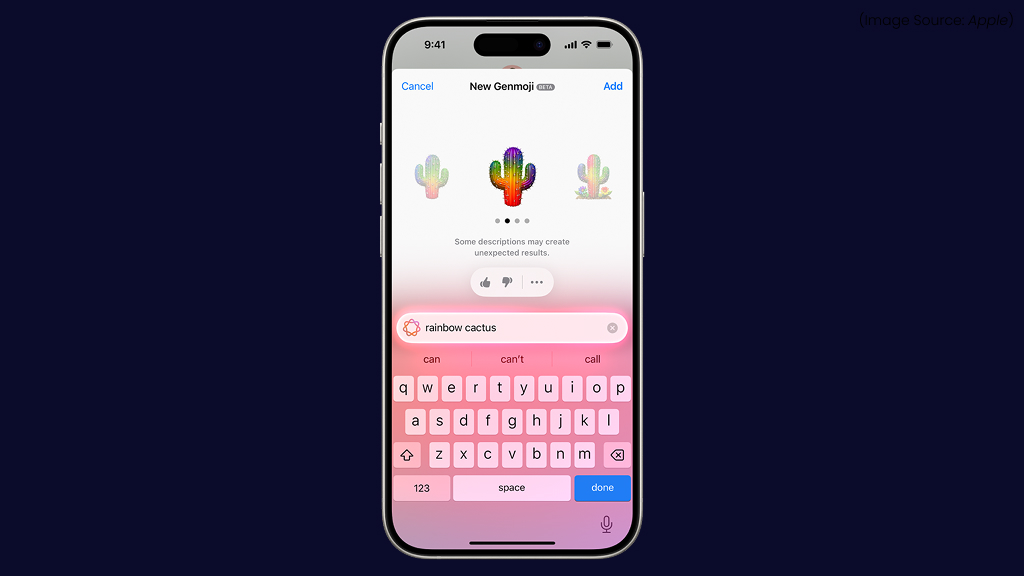
(Image Source: Apple)
Apple’s Genmoji feature, introduced in iOS 18.2, allows users to create custom emojis based on text prompts. While innovative, it has faced criticism for several reasons:
-
Limited Compatibility
Genmoji-generated emojis are primarily usable within iMessage. When shared outside iMessage, they appear as stickers, which may not be compatible with all platforms and can disrupt the flow of conversations.
-
Inconsistent Results
Users have reported that Genmoji often produces unexpected or inaccurate images. For instance, prompts like “balloon dog” might result in a “balloon animal in the shape of a dog,” which deviates from the intended emoji.
-
Misleading Advertising
Apple’s promotional materials for Genmoji showcased emojis that were not achievable using the feature, leading to user disappointment when they couldn’t replicate the advertised results.
-
Battery Drain
Genmoji has been widely reported to significantly drain battery life. Users have noted that enabling and using Genmoji, can cause the battery to drop even when the screen is locked and no other apps are running in the background. This rapid battery depletion is often accompanied by noticeable device overheating.
3. Image Playground
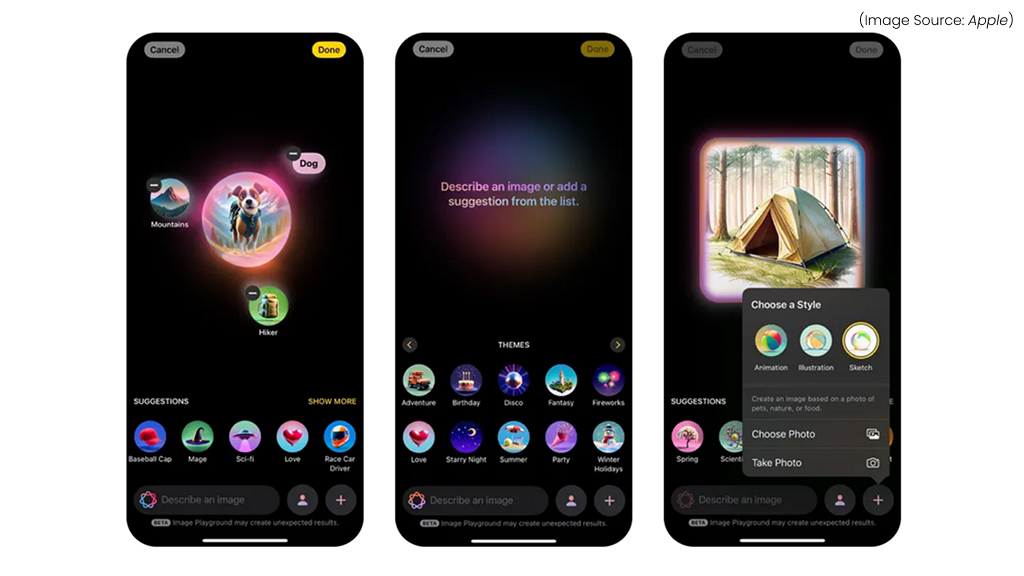
(Image Source: Apple)
Apple’s Image Playground, introduced in iOS 18.2 as part of Apple Intelligence, aims to let users create AI-generated images using text prompts. However, it has faced criticism for several reasons:
-
Limited Visual Styles
Image Playground restricts users to three styles: Animation, Illustration, and Sketch. This limitation prevents the creation of realistic images, which some users find restrictive.
-
Incomplete Human Figures
The tool often generates only partial human figures, typically from the chest up, making it challenging to depict full-body activities or scenes involving multiple people.
-
Strict Content Restrictions
Apple has implemented stringent measures, preventing the generation of images involving real people, copyrighted characters, or potentially controversial content. While this ensures safety, it also limits creative freedom.
-
Slow and Unreliable Performance
Some users have reported that the app gets stuck on a “downloading support” screen for extended periods, rendering it unusable.
-
Limited Device and Regional Availability
Image Playground is only available on specific devices (iPhone 15 Pro, iPhone 15 Pro Max, etc.) and in certain regions, leaving many users without access.
-
Inferior Image Quality Compared to Competitors
In comparisons with other AI image generators like Google’s Pixel Studio, Image Playground has been found lacking in terms of image quality and prompt accuracy.
4. Chat Assist
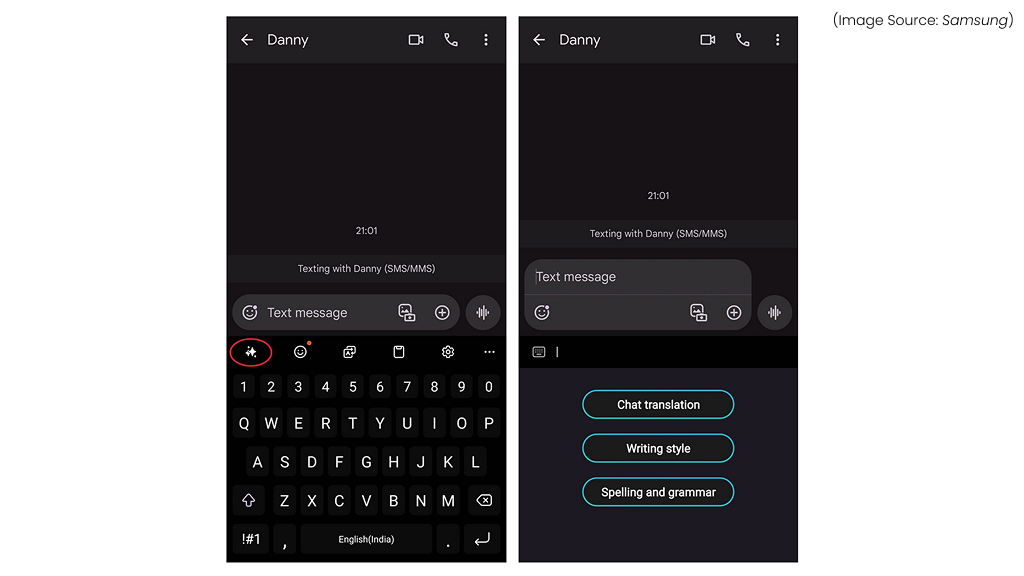
(Image Source: Samsung)
Samsung’s Chat Assist feature, introduced with the Galaxy S24 series as part of its Galaxy AI suite, aims to enhance messaging by offering tone adjustments, translations, and grammar corrections. However, it has faced significant criticism for several reasons:
-
Unnatural Tone Adjustments
Chat Assist’s tone modifications often result in messages that feel robotic or overly formal. For instance, when attempting to craft a casual message, the feature might insert excessive emojis or hashtags, making the text appear juvenile.
-
Dependence on Internet Connectivity
Chat Assist requires an active internet connection to function, limiting its usability in areas with poor connectivity. This reliance can hinder spontaneous communication, especially when network access is unreliable.
-
Perceived Lack of Value
A significant portion of Samsung users have expressed skepticism about the utility of Galaxy AI features, including Chat Assist.
5. Add Me
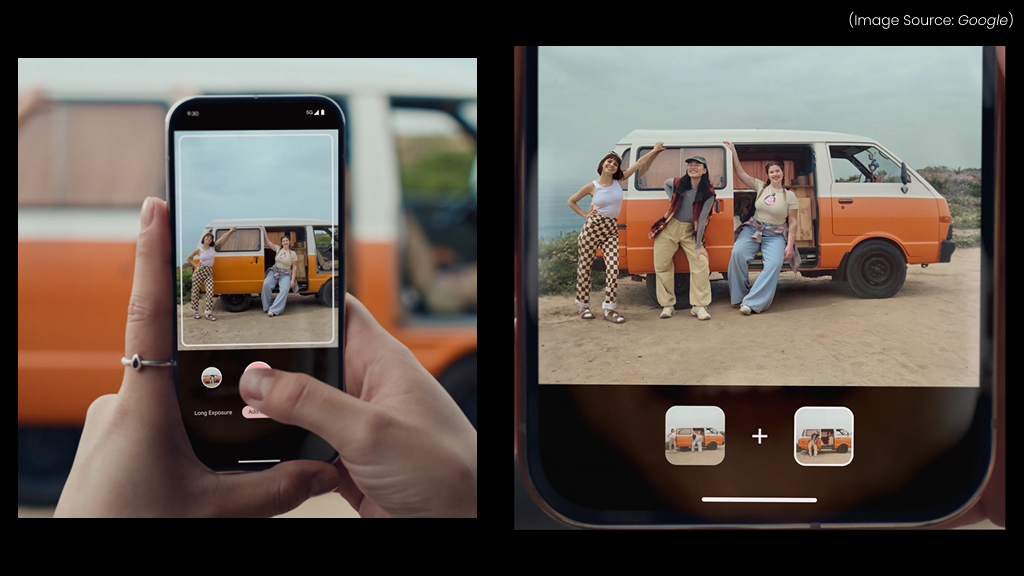
(Image Source: Google)
Google’s Add Me feature, introduced with the Pixel 9 series, aims to solve the age-old problem of the photographer being left out of group photos. By capturing two images, one with the group and another with the photographer, the feature uses AI to seamlessly merge them, ensuring everyone appears in the final shot. However, despite its innovative approach, “Add Me” has faced criticism for several reasons:
-
Inconsistent Results
Users have reported that the merged images sometimes appear unnatural, with noticeable discrepancies in lighting, shadows, or positioning. These inconsistencies can detract from the intended seamlessness of the feature.
-
Overcomplication of Simple Tasks
Some users feel that this feature complicates the straightforward act of taking a group photo. The process of capturing multiple images and relying on AI to merge them can be seen as unnecessary, especially when traditional methods are sufficient.
-
Limited Device Compatibility
It is exclusive to the Pixel 9 series, restricting its availability. This exclusivity can be frustrating for users of other devices who might benefit from similar features.
6. Gallery Search Using AI
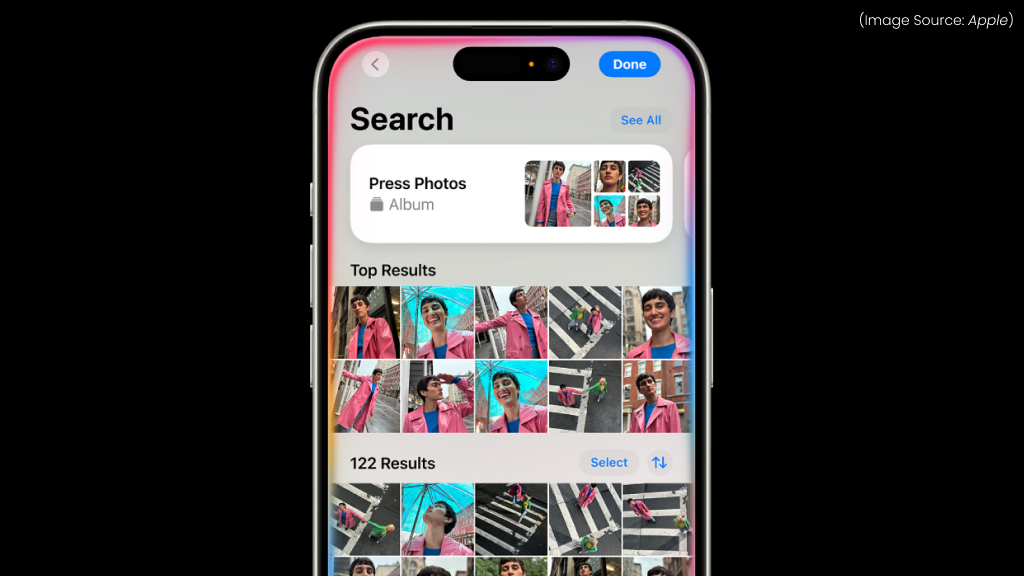
(Image Source: Apple)
AI-powered gallery search features on smartphones, such as Apple’s Enhanced Visual Search and Google’s Ask Photos, were introduced to streamline photo organization and retrieval. However, these features have faced criticism due to several shortcomings:
-
Inaccuracy and Misidentification
Users have reported that AI-driven photo searches often misidentify subjects or fail to retrieve relevant images. For instance, Google’s Ask Photos has been noted for its sluggish performance and occasional inaccuracies, leading to user frustration.
-
Performance Lag
The integration of AI in photo search has sometimes resulted in slower response times compared to traditional search methods. Users have observed that AI-enhanced searches can lag, making the experience less efficient.
-
Privacy Concerns
Apple’s Enhanced Visual Search has raised privacy issues among users. Despite Apple’s assurances of on-device processing and end-to-end encryption, some users feel that automatic photo analysis contradicts the company’s privacy-centric image.
-
Overcomplication of Simple Tasks
The AI’s attempt to categorize and tag photos can sometimes overcomplicate straightforward tasks. Users seeking specific images may find the AI’s categorizations unhelpful or confusing, detracting from the user experience.
7. Expand Image
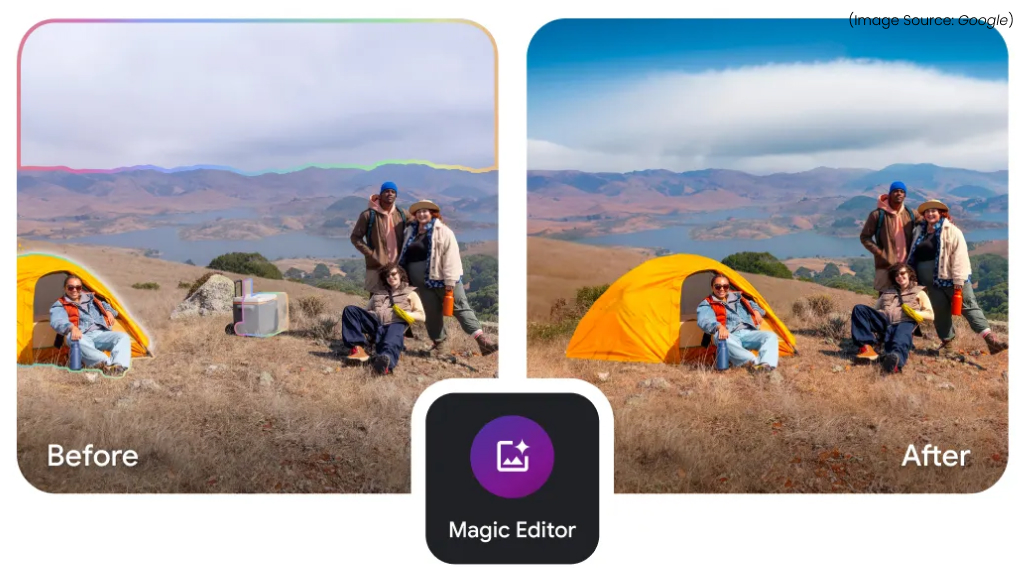
(Image Source: Google)
The “Expand Image” feature, integrated into various smartphone AI tools like Google’s Magic Editor and Samsung’s “Sketch to Image,” aims to enhance photos by extending backgrounds or adding elements. While innovative, this feature has faced criticism for several reasons:
-
Authenticity Concerns
AI-generated expansions can cause confusion between reality and fabrication. For instance, Samsung’s “Sketch to Image” can seamlessly insert objects into photos, making it challenging to distinguish between genuine and AI-altered images. This raises questions about the authenticity of shared photos and the potential spread of misinformation.
-
Technical Glitches
Some users have also reported that attempting to use AI expansion tools causes the photo editor app to crash, rendering the feature unusable.



